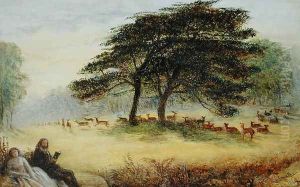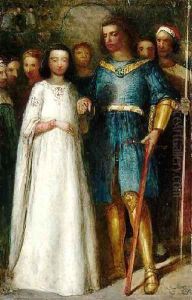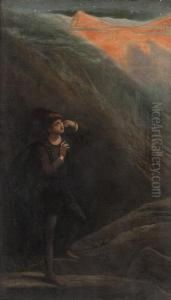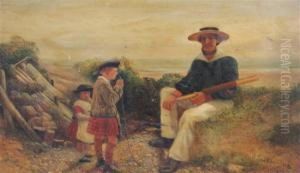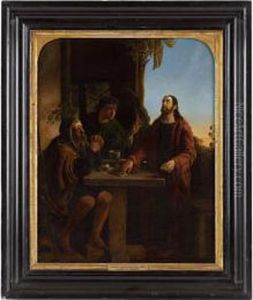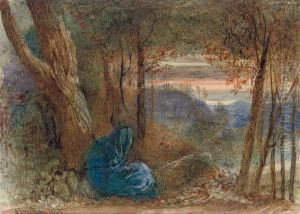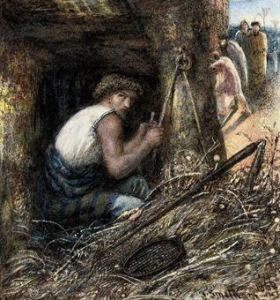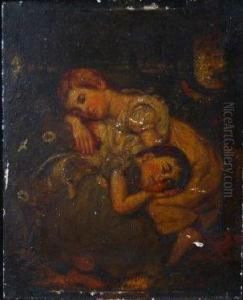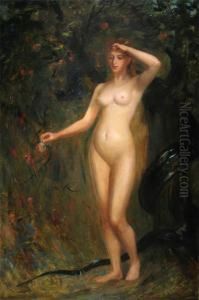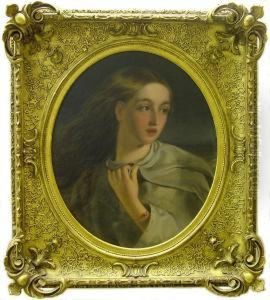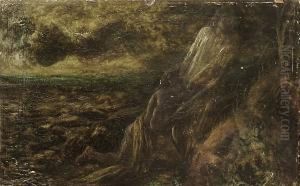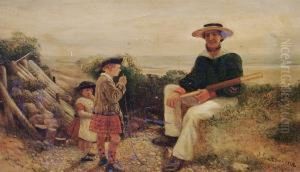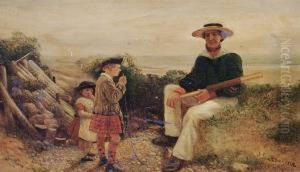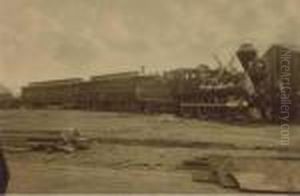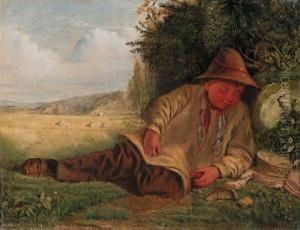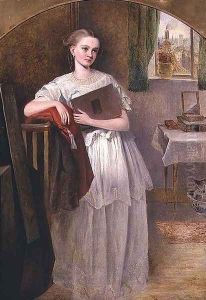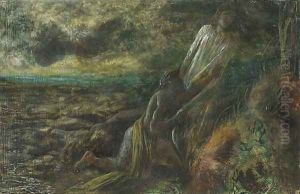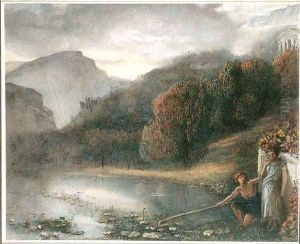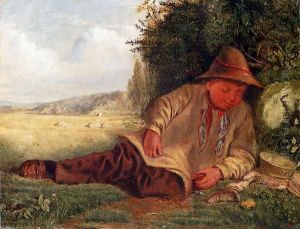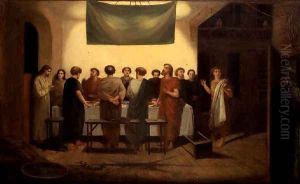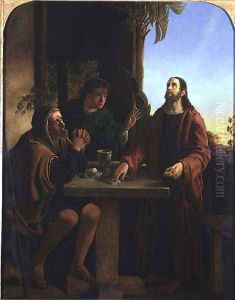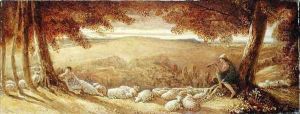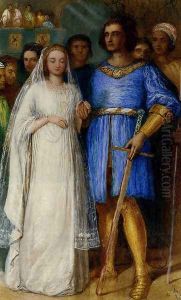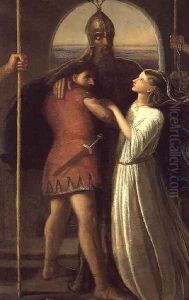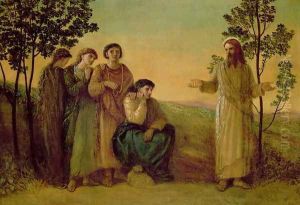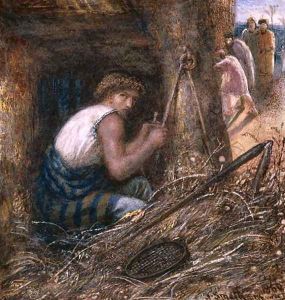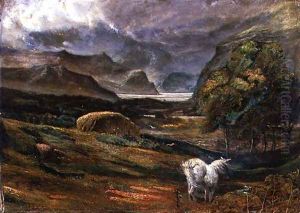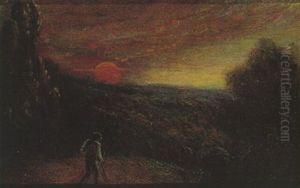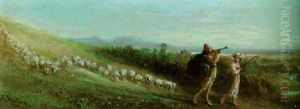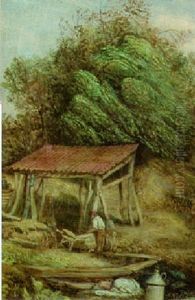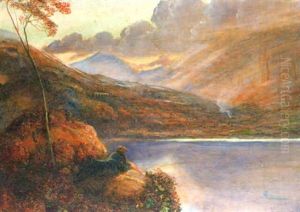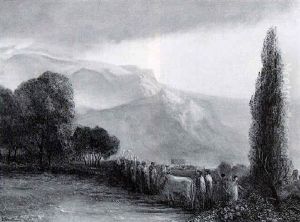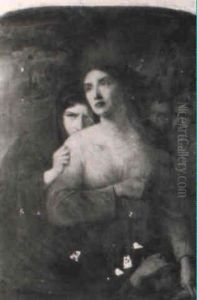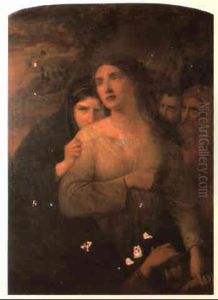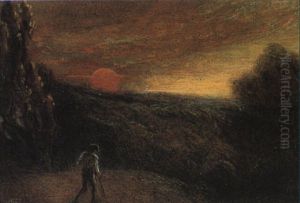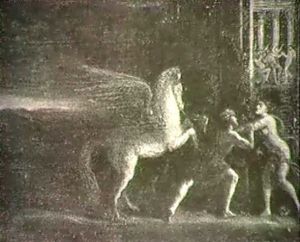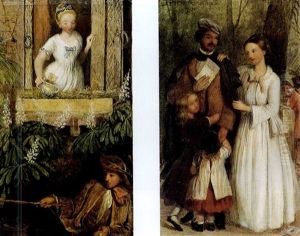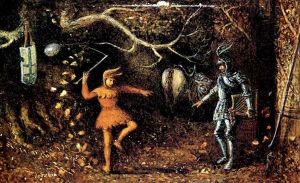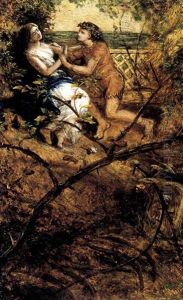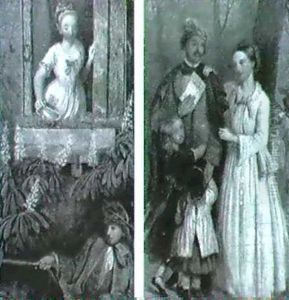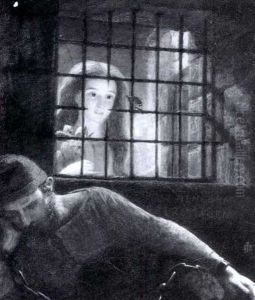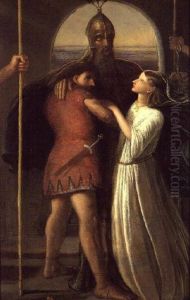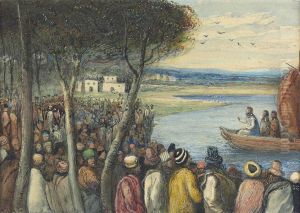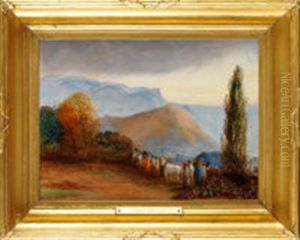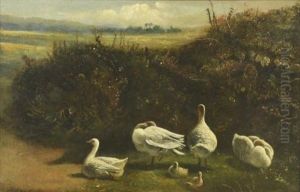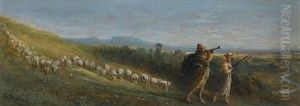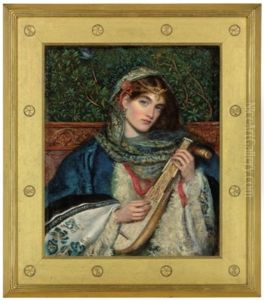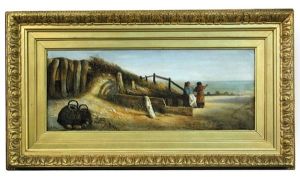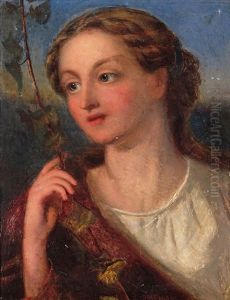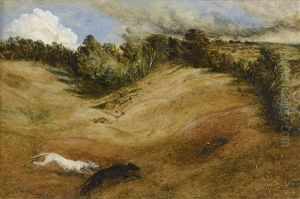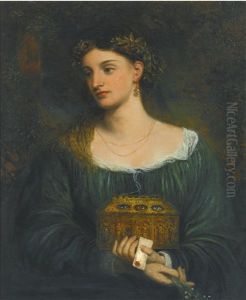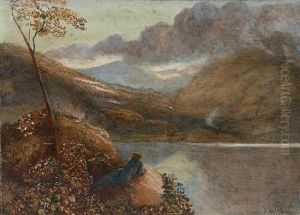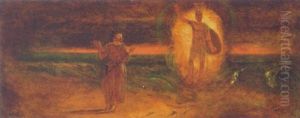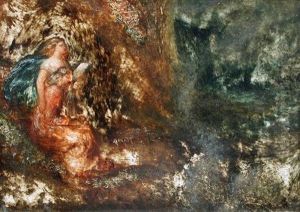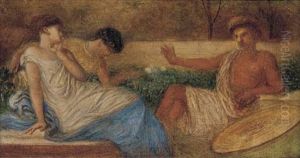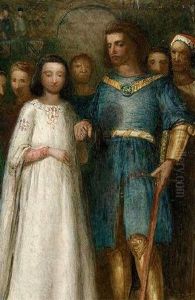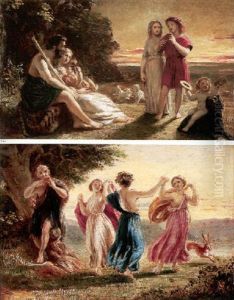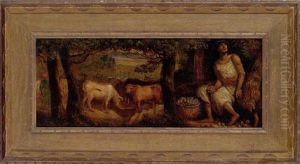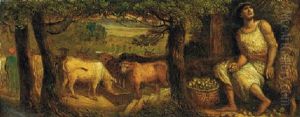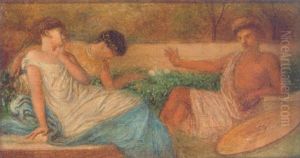James Smetham Paintings
James Smetham was a Victorian-era English painter and engraver, noted for his works of literary and religious subjects, and associated with the Pre-Raphaelite Brotherhood. Born on September 9, 1821, in Pateley Bridge, North Yorkshire, he initially pursued a career in business before turning to art. Smetham studied at the Royal Academy Schools after deciding to become a professional artist. He was influenced by the works of William Blake and was close to Dante Gabriel Rossetti, although he was never an official member of the Pre-Raphaelite Brotherhood.
Smetham's work often reflected his deep religious convictions and his interest in literature, particularly the writings of poet John Bunyan, author of 'The Pilgrim’s Progress'. He created numerous small paintings of scenes from Bunyan's works, as well as from the Bible and other literary sources. His style is characterized by meticulous detail, vibrant colors, and intense emotion, which were hallmarks of the Pre-Raphaelite movement.
In addition to painting, Smetham was a skilled engraver and received commissions to produce illustrations for various books. He was also a prolific writer of letters and essays on art and spirituality, which provide valuable insights into his thoughts and the art scene of his time.
Throughout his career, Smetham struggled with mental health issues, which affected his ability to work and socialize. He experienced periods of depression and, from the 1860s onwards, his mental health deteriorated. This led to his withdrawal from the art world and he spent the latter part of his life in seclusion, continuing to paint but with limited interaction with the outside world.
James Smetham passed away on February 5, 1889, in London. His work has been re-evaluated by art historians and he is now recognized for his unique contribution to Victorian art, particularly for his synthesis of literature and visual art, and his influence on the Pre-Raphaelite aesthetic.
